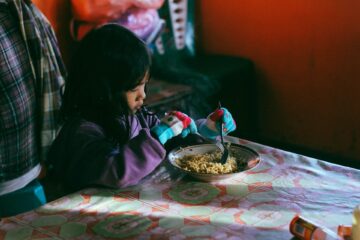Outline: cancer treatments | chemotherapy | surgery | bone marrow | immunotherapy/radiotherapy | late effects of cancer | final note
What are the effects of cancer in children? That’s just one out of the many questions running through your brain about childhood cancer. Can your child be able to live a normal healthy life?
When presented with the treatment plans for your child, it’s not uncommon nor strange to worry about if the treatment plan has any adverse side effects or late effects. In fact, many doctors (paediatric oncologists) say it’s one frequent question they’re asked – so go on and ask your child’s doctor!
What are the different treatments plans for childhood cancer?
Childhood cancer or cancer in general are often treated via combination therapy. That is, your child’s doctor(s) will most likely use a combination of different treatments.
The combo used depends on a few factors such as the type of cancer and how far the cancer has spread. Also, some negative effects of cancer in children are side effects or late effects of childhood cancer treatments.
But before we dig into childhood cancer treatments, here’s an article that focuses exclusively on childhood cancer.
Here are the most common types cancer treatments:
1. Chemotherapy
This should definitely be the commonest type of cancer treatment a lot of us know, all thanks to it being mentioned over and over again in the movies.
Chemotherapy simply involves the use of drugs. The drugs are meant to target rapidly dividing cells and destroy them. Cancer cells are rapidly dividing cells; however, they aren’t the only type of rapidly dividing cells present in the body.
Hair follicles, blood cells, cells in the mouth, and cells of the GIT are also rapidly dividing cells that are attacked by these drugs. This explains why chemotherapy is done in cycles and why cancer patients undergoing chemotherapy often lose their hair and have mouth sores, nausea, low blood counts, and diarrhoea.
When hair cells are attacked and destroyed, hair loss is bound to happen. Summarily, these effects make xancer patients undergoing chemo feel sick.
How are the side effects of chemotherapy relieved?
To relieve the effects of chemotherapy on non-cancerous cells, chemotherapy is done in cycles. What does that really mean?
It simply means that after the drugs have been administered for a certain period, the body is given a break to rest and regain its strength. The healthy normal cells that were harmed during chemo are readily replaced or repaired by the body. Hence, the side effects go away once the medications are stopped, thus it’s necessary that chemo be done in cycles.
2. Surgery
Sometimes, rather than use drugs, paediatric oncologists opt for surgery especially in cancers like brain cancer to remove the tumour or lump.
Surgery is usually a good option if the cancer is localized, that is, if it hasn’t spread to other parts of the body. If it has, surgery alone won’t be enough.
3. Bone marrow/stem cell transplantation
This treatment plan is needed for cancers such as leukaemia and other types of cancers like myeloma and lymphomas. PS: Bone marrow transplant (also known as stem cell transplant) is also used for the treatment of sickle cell anaemia.
The bone marrow transplant is done to transplant healthy stem cells into the child’s bone marrow.
Why is a bone marrow or stem cell transplant done?
The bone marrow is where blood cells are made. It contains (haematopoietic or blood-forming) stem cells which differentiates into red blood cells, white blood cells, and platelets.
A person with cancer often has damaged haematopoietic stem cells, hence replacing these unhealthy stem cells with healthy stem cells that matches the child’s type will lead to the production of healthy, non-mutated blood cells.
Note: Cancer treatment like chemotherapy often damage these blood-forming stem cells as well.
4. Immunotherapy
This treatment plan aims to boost the immune system. Think of it as handing the body’s natural immune system with tons of weapons like grenades and AK47s (or even atomic bombs), and with these weapons, they’re better equipped to fight cancerous cells.
There are different types of immunotherapy and they do not all work in the same way.
5. Radiotherapy
Radiotherapy is the use of high-energy x-rays or protons to target tumours in specific locations. The brain, abdomen, and chest are examples of such specific locations.
It can lead to more adverse side or late effects. Some of the side effects include fatigue, low blood counts and radiation dermatitis. For more on this, check this out!
If your child’s doctor decides to go with radiotherapy, then surely, it’s for the best reason. If you have any worries, talk to the doctor about them.
Are there any other treatment options for cancer in children?
Other treatment options include targeted therapy, hormone therapy (usually for cancers in adults like breast or prostate cancer), precision medicine, and biomarker testing.
Late Effects of Cancer in Children (Childhood Cancer)
All thanks to the advancements in medical science, more children are surviving cancer now than before, but the adverse effects of the treatments, the type and the location of the cancer, the child’s age, and the child’s health before and after the cancer could prevent the child from enjoying quality life in the future.
Children who survive cancer are at risk of developing other health problems during the course of treatment, while some could take months or years before showing up (late effects). But these shouldn’t scare you, rather you should help inculcate healthy habits into your child.
These issues range from medical to psychological problems like depression or anxiety. Some of them include:
Cognitive impairment:
Treating brain tumours require radiation, chemotherapy, and/or surgery depending on the tumour grade.
These treatment options could destroy healthy brain cells and cause cognitive impairment in children, which eventually play out as children as grow older.
Cancer treatments could cause poor academic performance, problems with balance and coordination, attention and behavioural problems, etc.
Heart diseases:
Anthracycline, a chemotherapy drug, and radiation therapy focused on the chest region could have damaging effects on the heart. This depends on the dosage of the drug administered to the child.
Infertility:
Certain cancer therapies and drugs that are targeted at sexual organs could affect sexual development in both boys and girls. It can cause fertility issues in the future, if not properly managed.
These treatments also interfere with the normal sexual function by damaging hormone production sites like the testis in males; blood vessels, nerves etc.
Second cancer:
It’s imperative that children who survive cancer be screened for the same or other types of cancer regularly because they are at risk of developing a second cancer months or years after the treatment of the first one.
This second cancer depends partly on the type of cancer and also on the treatment administered.
For instance, children who survive non-melanoma skin cancer after radiation treatment have an increased risk of developing other types of cancer in the future. Also, treating cancer with cyclophosphamide, a chemotherapy drug, could cause bladder cancer in the future.
Psychological effects:
Some children do not remain the same, psychologically, after the ordeals of cancer. Most children find it difficult to associate with people because of the fear of stigmatization and feelings of low self-esteem plus symptoms of depression.
Children who have childhood cancer often spend a long while away from school, and when they eventually return, they’re made to repeat classes; the pain of watching their peers go ahead of them in class usually make them feel despair.
Research shows that childhood cancer survivors are four times more likely to develop traumatic stress disorder (PTSD) than their siblings. This is as a result of the pain of suffering the disease and the horrifying treatments.

Final words
Childhood cancer is a sad experience and no one in their right senses wants to see any child go through such pain at such an age, especially when they should be getting the best out of childhood.
However, it’s still very much possible to live a completely healthy life as a childhood cancer survivor, in spite of the effects of cancer in the body.
The side effects from cancer treatments goes away once the treatment (usually medications) is stopped. And as for the late-effects, regular check-up and monitoring will go a long way to prevent this.
What should your child do after surviving cancer? Simple, make sure they live the life they truly desire and that they don’t skip any doctor’s appointment.
Got more questions? Here’s a list of FAQs on childhood cancer.


